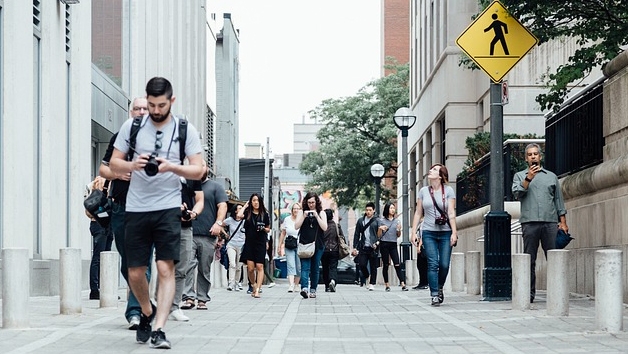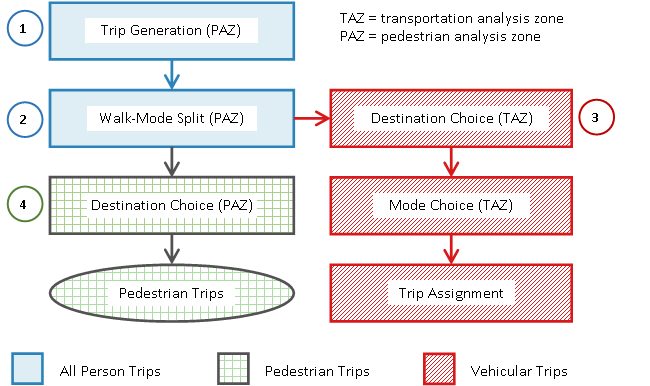Researchers create tool to forecast pedestrian demand

A new NITC project has developed a robust pedestrian demand estimation tool, the first of its kind in the country.
-
See the research here: Development of a Pedestrian Demand Estimation Tool
Using the tool, planners can predict pedestrian trips with spatial acuity.
The research was completed in partnership with Oregon Metro, and will allow Metro to allocate infrastructure based on pedestrian demand in the Portland, Oregon metropolitan area.
In a previous project completed last year as part of the same partnership, the lead investigator, Kelly Clifton, developed a way to collect data about the pedestrian environment on a small, neighborhood scale that made sense for walk trips. For more about how that works, click here to read our news coverage of that project.
Following the initial project, the next step was to take that micro-level pedestrian data and use it to predict destination choice. For every walk trip generated by the model in the first project, this tool matches it to a likely destination based on traveler characteristics and environmental attributes.
Patrick Singleton, a graduate student researcher at Portland State University (recently named as NITC student of the year), has contributed to both projects and believes they represent an important step toward the development of planning tools to support active transportation.
“Not surprisingly, we found that distance was a strong deterrent,” Singleton said. “However, we also found a positive effect from pedestrian-friendly infrastructure.”
More attractive pedestrian environments generate more walk trips, after controlling for other factors. This means that even when the distance is equal, people are more likely to walk it if the walk is a pleasant one.
In the Portland metro area, researchers also found that people in carless or childless households were willing to walk longer distances for some purposes.
For generations, planners have been using statistical models to forecast travel demand, but these models have traditionally been auto-centered.
“To our knowledge, this is one of the first studies that examines where people walk to, and what kind of things influence that behavior,” Singleton said.
The goal of this research is to increase the representation of walking within travel demand models. Below is a representation of how that fits in with traditional models:

After this project, the next logical step would be to predict not only the number of walk trips and their destinations, but also map out the routes that people are likely to take.
This tool is designed to be replicable for other metropolitan areas. Any city wishing to improve its walking environment can adapt this model to begin predicting pedestrian demand.
Learn more by visiting the project page or downloading the final report.
